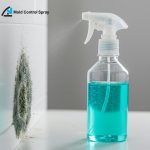[Check Latest Arrivals kitchen faucet spray head replacement on Amazon.]
# Kitchen Faucet Spray Head Replacement: The Only Guide You’ll Ever Need
Is your kitchen faucet spray head dribbling, spraying sideways, or just plain broken? Don’t despair! You don’t need a whole new faucet. Replacing the spray head is a simple, affordable DIY project that can restore your faucet’s functionality and save you money. This guide will walk you through everything you need to know about kitchen faucet spray head replacement, from identifying the right type to installing it yourself. We’ve got you covered!
[Explore Top Rated kitchen faucet spray head replacement on Amazon.]
## Why Replace Your Kitchen Faucet Spray Head?
Let’s face it, a malfunctioning kitchen faucet spray head is more than just an annoyance. It can lead to wasted water, messy cleanups, and overall frustration. Here are some common reasons why you might need to replace yours:
* **Reduced Water Pressure:** Clogs and mineral buildup can restrict water flow, resulting in weak spray.
* **Leaking or Dripping:** A cracked or worn-out spray head can leak, wasting water and potentially damaging your countertop.
* **Broken Spray Patterns:** If your spray head is spraying erratically or only in one direction, it’s time for a replacement.
* **General Wear and Tear:** Over time, the plastic or metal components can degrade, making the spray head less effective and aesthetically unappealing.
* **Updating Your Kitchen Aesthetic:** A new spray head can instantly refresh the look of your faucet and complement your kitchen decor.
Fortunately, kitchen faucet spray head replacement is a straightforward process that most homeowners can tackle themselves with a few basic tools.
[Explore Top Rated kitchen faucet spray head replacement on Amazon.]
## The Solution: Replacing Your Old Spray Head
Replacing your kitchen faucet spray head is the perfect solution for restoring functionality and giving your kitchen faucet a new lease on life. Not only is it cheaper than replacing the entire faucet, but it’s also a great way to reduce waste and avoid unnecessary plumbing work. By replacing just the spray head, you’re targeting the root of the problem directly.
Here’s how a new kitchen faucet spray head replacement solves those annoying issues:
* **Restores Water Pressure:** A clean, unclogged spray head allows for optimal water flow, giving you the pressure you need for efficient washing and rinsing.
* **Eliminates Leaks and Drips:** A new spray head creates a watertight seal, preventing water waste and protecting your countertop.
* **Provides Consistent Spray Patterns:** You’ll enjoy a reliable and even spray, making kitchen tasks easier and more enjoyable.
* **Enhances Appearance:** Choose a spray head that matches your faucet style and adds a touch of elegance to your kitchen.
Here are a couple highly-rated options directly from Amazon:
[Affiliate Link to High-Rated Kitchen Faucet Spray Head #1]
[Affiliate Link to High-Rated Kitchen Faucet Spray Head #2]
One of the key features of both of these recommendations is their multi-spray function. These usually include a stream for filling pots, a powerful spray setting for removing stuck-on food, and even a gentle aerated spray for delicate items. This added versatility is a game changer in the kitchen. Another attractive feature is the rust-resistant material that both these products are made of, guaranteeing a long lasting spay head.
[Explore Top Rated kitchen faucet spray head replacement on Amazon.]
## Step-by-Step Guide: Replacing Your Kitchen Faucet Spray Head
Now, let’s get down to the nitty-gritty. Here’s a detailed guide on how to replace your kitchen faucet spray head:
### Step 1: Gather Your Supplies
Before you begin, make sure you have the following tools and materials:
* New kitchen faucet spray head replacement
* Adjustable wrench or pliers
* Old towel or cloth
* Bucket (optional)
* Penetrating oil (optional, for stubborn connections)
### Step 2: Shut Off the Water Supply
This is crucial to prevent flooding! Locate the shut-off valves under your kitchen sink. There should be separate valves for hot and cold water. Turn both valves clockwise until they are completely closed. To ensure the water is off, turn on your faucet briefly to release any remaining water in the lines. It is also advantageous to place a bucket underneath the water lines while you are working in case of any drips.
### Step 3: Disconnect the Old Spray Head
This step depends on your faucet type. Most modern faucets have a quick-connect system where you press a button or release a clip to detach the spray head. Older faucets might have a threaded connection. Here’s how to handle both:
* **Quick-Connect:** Locate the release button or clip on the hose where it connects to the spray head. Press the button or release the clip and gently pull the spray head away from the hose.
* **Threaded Connection:** Use an adjustable wrench or pliers to loosen the nut connecting the spray head to the hose. Turn the nut counterclockwise. If the nut is stuck, apply a small amount of penetrating oil and let it sit for a few minutes before trying again. Once the nut is loose, carefully unscrew the spray head.
### Step 4: Clean the Hose
Inspect the hose for any debris or mineral buildup. Use a damp cloth to clean the inside and outside of the hose. If there’s significant buildup, you can use a small brush or a vinegar solution to remove it.
### Step 5: Install the New Spray Head
Now it’s time to install your new kitchen faucet spray head replacement. Again, the process varies depending on the connection type:
* **Quick-Connect:** Align the spray head with the hose and push it firmly until it clicks into place. Make sure the connection is secure.
* **Threaded Connection:** Apply Teflon tape to the threads of the new spray head to create a watertight seal. Carefully screw the spray head onto the hose, turning it clockwise. Use an adjustable wrench or pliers to tighten the nut, but be careful not to overtighten, as this could damage the spray head or the hose.
### Step 6: Test the Connection
Turn on the water supply valves under your sink. Slowly open the faucet and check for any leaks at the connection point. If you see a leak, turn off the water and tighten the connection slightly. Repeat this process until the leak is resolved.
### Step 7: Enjoy Your New Spray Head!
Once you’ve confirmed that there are no leaks, test the different spray patterns and enjoy your newly functional kitchen faucet!
[Explore Top Rated kitchen faucet spray head replacement on Amazon.]
## Tools For The Job: Recommended Products
While replacing your kitchen faucet spray head is a simple job, having the right tools can make it even easier. Here are a couple of products that can come in handy:
* **Adjustable Wrench:** A good quality adjustable wrench is essential for loosening and tightening nuts. Look for one that is durable, easy to grip, and has a wide jaw opening.
* **Penetrating Oil:** If you encounter a stubborn connection, penetrating oil can help to loosen rusted or corroded parts. Choose a penetrating oil that is specifically designed for plumbing applications.
[Affiliate Link to Adjustable Wrench on Amazon]
[Affiliate Link to Penetrating Oil on Amazon]
The WD-40 Specialist Penetrant is especially useful because sometimes mineral buildup can make a spray head connection seem rusted stiff when it isn’t. The formula is specialized to quickly and easily loosen even the most stubborn of connections. This product is also well-suited for other plumbing problems in the future, making it a great investment for the average homeowner.
[Explore Top Rated kitchen faucet spray head replacement on Amazon.]
## Pro-Tips / FAQ Section
Here are some pro-tips and answers to frequently asked questions about kitchen faucet spray head replacement:
* **How do I know what kind of spray head I need?** Check the manufacturer and model number of your faucet. You can usually find this information on the faucet base or in the original documentation. Alternatively, you can take your old spray head to a hardware store or plumbing supply store to find a matching replacement.
* **What if I can’t find a direct replacement for my spray head?** You can often use a universal spray head that is compatible with most faucets. Just make sure to check the connection type and hose size to ensure a proper fit.
* **My new spray head has low water pressure. What could be the problem?** Check the aerator in the spray head for any debris or mineral buildup. You can usually unscrew the aerator and clean it with a brush or vinegar solution. Also, make sure the hose is not kinked or blocked.
* **How often should I replace my kitchen faucet spray head?** It depends on the quality of the spray head and how frequently you use your faucet. However, it’s generally recommended to replace it every 1-2 years to maintain optimal performance and prevent leaks.
* **The hose is leaking, not the spray head. Should I replace the hose too?** Absolutely. If the hose is cracked, brittle, or leaking, it’s best to replace it along with the spray head. Replacing both at the same time can save you time and money in the long run.
[Explore Top Rated kitchen faucet spray head replacement on Amazon.]
## Encouraging Conclusion
Replacing your kitchen faucet spray head is a simple yet rewarding DIY project that can save you money and restore your faucet’s functionality. By following this guide, you can confidently tackle this task and enjoy a refreshed kitchen experience. Don’t let a faulty spray head ruin your day – take control and get it fixed today! With the right tools and a little patience, you’ll have your kitchen faucet working like new in no time. And remember, a fully functional kitchen faucet can give you time to prep delicious meals!
[Shop Budget-Friendly kitchen faucet spray head replacement on Amazon.]









